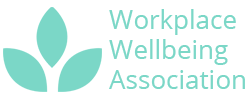
Widespread workplace stress and anxiety have contributed to a significant drop in productivity during the last two years, a UK survey has found.
A January 2022 report from Champion Health which polled 2,200 UK employees, found that 67% were experiencing moderate to high levels of stress.
34% said that stress was negatively impacting them, with the main causes cited as workload, lack of control and less support.
In addition, more than half of those polled said they felt fatigued and that tiredness was impacting their productivity at work.
The Impacts of Workplace Stress
One could argue that stress is not all bad and that a degree of pressure motivates and enthuses us. However when the potential stressors tip our mental health and wellbeing into negative territory, we have a problem.
Workplace stressors are classified as physical and psychosocial. Physical stressors include noise, poor lighting, poor office or work layout, and ergonomic factors, such as bad working postures.
Psychosocial stressors are arguably the more predominant stress factors. They include high job demands, inflexible working hours, poor job control, poor work design and structure, bullying, harassment, and job insecurity.
The effects of these stressors occur in a continuum, beginning with distress which then leads to elevated blood pressure and anxiety, which then increases the risk of coronary heart disease, substance abuse, and anxiety disorders.
The impact of stress on cardiovascular disease has been well established with studies showing that workplace stress is a strong risk factor for preludes to cardiovascular disease (obesity, high blood cholesterol, high blood pressure) and of adverse cardiovascular events, such as heart attack and stroke.
What’s the cure?
Rachel Suff, senior employment relations adviser at the CIPD, said employers should focus on prevention rather than “allowing problems to snowball”.
“Crucial to this proactive approach is training line managers to identify potential causes of stress and ensuring they are effective at managing people and workloads,” she said.
Effective interventions can be classified as primary, secondary, and tertiary.
A. Primary
Primary interventions involve measures to prevent stress by removing or reducing potential stressors. These could include:
- Redesigning the work environment
- Providing breaks for employees
- Increasing employee participation in decision making
- Increasing time and resource for completing tasks
- Matching job description with employee skills and qualifications
- Creating clear promotion and reward pathways
B. Secondary
Secondary interventions are corrective and are focused on altering the ways employees perceive and respond to stressors. Examples include:
- Training and education
- Cognitive behavioural therapy
- Routine health surveillance – screening for high blood pressure and stress symptoms
C. Tertiary
Tertiary interventions take place at the level of the illness itself. They are initiated for those already experiencing stress. Examples include treatment, compensation plans, rehabilitation programs, and return to work programs
Workplace Wellbeing
Workplace stress is a silent, and often neglected, factor which impairs employee health and productivity. It not only affects individual employees but also contributes significantly to a decline in a company’s overall success.
Prevention is better (and much cheaper) than cure. The Workplace Wellbeing Association is focused on persuading employers to implement real strategic programmes, with a good quality of delivery and excellent measurement processes.
We feel there is a need to focus on prevention, personal development and performance improvement. We wish to build an evidence base to show employers that both employer and employee will benefit from investing time and resource towards the improvement of mental health and wellbeing.
Mark Heath
Co-Founder – Workplace Wellbeing Association







